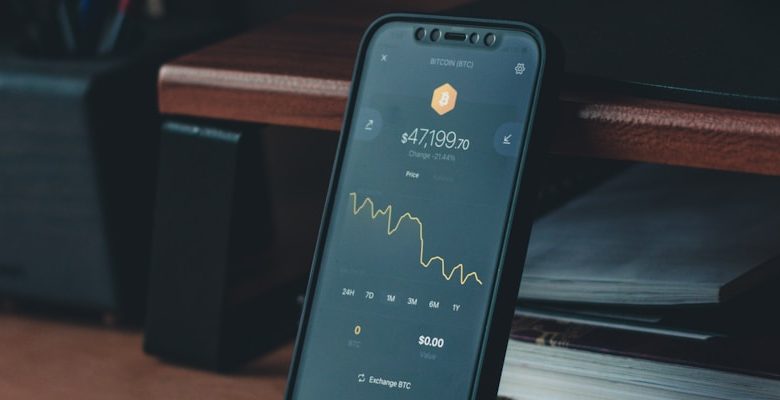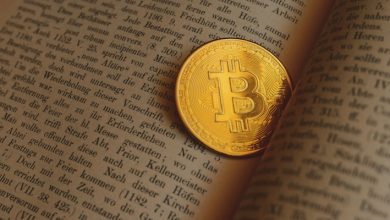What is a Blockchain Oracle? Bridging the Gap Between On-Chain and Off-Chain Data

- Understanding the role of a blockchain oracle in the world of decentralized finance
- Exploring the challenges of integrating off-chain data into smart contracts
- How blockchain oracles ensure the accuracy and reliability of external data sources
- The potential impact of blockchain oracles on various industries beyond finance
- Comparing different types of blockchain oracles and their unique features
- Future innovations in blockchain oracles and their implications for the decentralized ecosystem
Understanding the role of a blockchain oracle in the world of decentralized finance
The role of a blockchain oracle in the world of decentralized finance is crucial for bridging the gap between on-chain and off-chain data. In the realm of decentralized finance, smart contracts are used to automate various financial transactions without the need for intermediaries. However, smart contracts are not able to access data from the outside world, which is where blockchain oracles come into play.
A blockchain oracle serves as a bridge between the blockchain and external data sources, allowing smart contracts to interact with real-world data in a secure and trustless manner. This enables smart contracts to make informed decisions based on real-time information, such as price feeds, weather data, or sports scores.
By providing external data to smart contracts, blockchain oracles play a vital role in enabling a wide range of decentralized finance applications, such as decentralized exchanges, lending platforms, and prediction markets. They help to ensure the accuracy and reliability of data used in smart contracts, ultimately enhancing the efficiency and effectiveness of decentralized financial systems.
Exploring the challenges of integrating off-chain data into smart contracts
Integrating off-chain data into smart contracts poses several challenges that need to be addressed in order to ensure the accuracy and reliability of the information being inputted. One of the main challenges is the issue of trust, as off-chain data sources may not always be verifiable or transparent. This lack of transparency can lead to potential manipulation of the data, which can compromise the integrity of the smart contract.
Another challenge is the issue of latency, as off-chain data sources may not always be updated in real-time. This can result in delays in accessing the information needed to execute the smart contract, which can impact the overall efficiency and effectiveness of the process. Additionally, the integration of off-chain data requires a secure and reliable connection to ensure that the data being inputted is accurate and tamper-proof.
Furthermore, the complexity of integrating off-chain data into smart contracts can be a barrier for developers who may not have the expertise or resources to properly implement this functionality. This can lead to errors in the integration process, which can result in vulnerabilities and security risks for the smart contract.
How blockchain oracles ensure the accuracy and reliability of external data sources
Blockchain oracles play a crucial role in ensuring the accuracy and reliability of external data sources in the blockchain ecosystem. By acting as bridges between on-chain smart contracts and off-chain data feeds, oracles enable blockchain networks to interact with real-world data in a secure and trustless manner.
One way blockchain oracles ensure data accuracy is through the use of multiple data sources. By aggregating information from various reputable providers, oracles can cross-reference data to verify its authenticity. This multi-sourcing approach helps mitigate the risk of inaccuracies or manipulation in the data being fed into smart contracts.
Another method used by blockchain oracles to enhance data reliability is through the implementation of consensus mechanisms. By requiring validators to reach a consensus on the data being transmitted, oracles can ensure that the information is valid and has not been tampered with. This consensus process adds an extra layer of security and integrity to the data being retrieved from external sources.
Furthermore, blockchain oracles utilize cryptographic techniques such as digital signatures to ensure data integrity. By cryptographically signing the data they provide, oracles can prove that the information has not been altered during transmission. This cryptographic proof adds another level of assurance to the accuracy and reliability of the data being used in smart contracts.
In conclusion, blockchain oracles are essential components in bridging the gap between on-chain and off-chain data by ensuring the accuracy and reliability of external data sources. Through the use of multiple data sources, consensus mechanisms, and cryptographic techniques, oracles play a vital role in enabling blockchain networks to securely interact with real-world data.
The potential impact of blockchain oracles on various industries beyond finance
Blockchain oracles have the potential to revolutionize various industries beyond just finance. By bridging the gap between on-chain and off-chain data, these oracles can provide a secure and reliable way to bring real-world information onto the blockchain. This opens up a world of possibilities for sectors such as supply chain management, healthcare, insurance, and even voting systems.
In the supply chain industry, blockchain oracles can enable the tracking of products from the raw materials stage to the final consumer, ensuring transparency and authenticity throughout the process. This can help in preventing fraud, ensuring product quality, and optimizing logistics.
In the healthcare sector, blockchain oracles can securely connect patient data from various sources, allowing for more efficient and accurate diagnoses and treatment plans. This can lead to improved patient outcomes and streamlined healthcare operations.
In the insurance industry, blockchain oracles can automate claims processing by verifying the authenticity of claims using real-time data. This can reduce fraudulent claims and expedite the settlement process for policyholders.
Even in voting systems, blockchain oracles can be used to securely record and verify votes, ensuring the integrity of the electoral process. This can help in increasing voter trust and participation in elections.
Overall, the potential impact of blockchain oracles on various industries is immense. By providing a reliable way to integrate off-chain data onto the blockchain, these oracles can enhance transparency, efficiency, and security across different sectors, ultimately leading to a more interconnected and trustworthy digital ecosystem.
Comparing different types of blockchain oracles and their unique features
When comparing different types of blockchain oracles, it is essential to understand their unique features to determine which one best suits the specific needs of a project. There are several types of blockchain oracles available, each with its own strengths and weaknesses. Some common types include:
1. **Data Oracles**: These oracles are designed to provide real-world data to the blockchain. They can feed information such as price feeds, weather updates, sports scores, and more. Data oracles are essential for decentralized applications that rely on external data for their operations.
2. **Service Oracles**: Unlike data oracles, service oracles focus on providing off-chain services to smart contracts. These services can range from API integrations to complex computations. Service oracles bridge the gap between on-chain and off-chain worlds by enabling smart contracts to interact with external services.
3. **Hardware Oracles**: Hardware oracles are specialized in providing data from physical devices to the blockchain. This can include IoT devices, sensors, and other hardware components. Hardware oracles play a crucial role in connecting physical assets to digital ecosystems.
4. **Consensus Oracles**: Consensus oracles help validate data from multiple oracles to ensure its accuracy and reliability. By aggregating data from different oracles, consensus oracles can reduce the risk of manipulation or errors in the information provided to the blockchain.
Each type of oracle has its own unique features and use cases, making it essential to choose the right one based on the requirements of a project. By understanding the different types of blockchain oracles available, developers can leverage their capabilities to enhance the functionality and reliability of decentralized applications.
Future innovations in blockchain oracles and their implications for the decentralized ecosystem
Future innovations in blockchain oracles are set to revolutionize the decentralized ecosystem by enhancing the reliability and efficiency of off-chain data integration. One key development on the horizon is the advancement of decentralized oracles that utilize a network of multiple data sources to verify and validate information. This multi-source approach helps to mitigate the risks associated with single points of failure and malicious manipulation of data.
Another exciting innovation is the integration of artificial intelligence and machine learning algorithms into blockchain oracles. By leveraging these technologies, oracles can analyze and interpret complex data sets in real-time, providing more accurate and timely information to smart contracts. This development has the potential to significantly improve the overall performance and responsiveness of decentralized applications.
Furthermore, the emergence of secure hardware-based oracles is expected to address the security vulnerabilities that have plagued traditional software-based solutions. By utilizing secure enclaves and trusted computing mechanisms, hardware-based oracles can provide a higher level of data integrity and confidentiality, making them ideal for handling sensitive information such as financial transactions or personal data.
In conclusion, the future of blockchain oracles holds great promise for the decentralized ecosystem. With advancements in multi-source verification, artificial intelligence integration, and secure hardware-based solutions, oracles are poised to bridge the gap between on-chain and off-chain data like never before. These innovations are set to usher in a new era of trust, transparency, and efficiency in decentralized applications, paving the way for widespread adoption and mainstream acceptance of blockchain technology.



